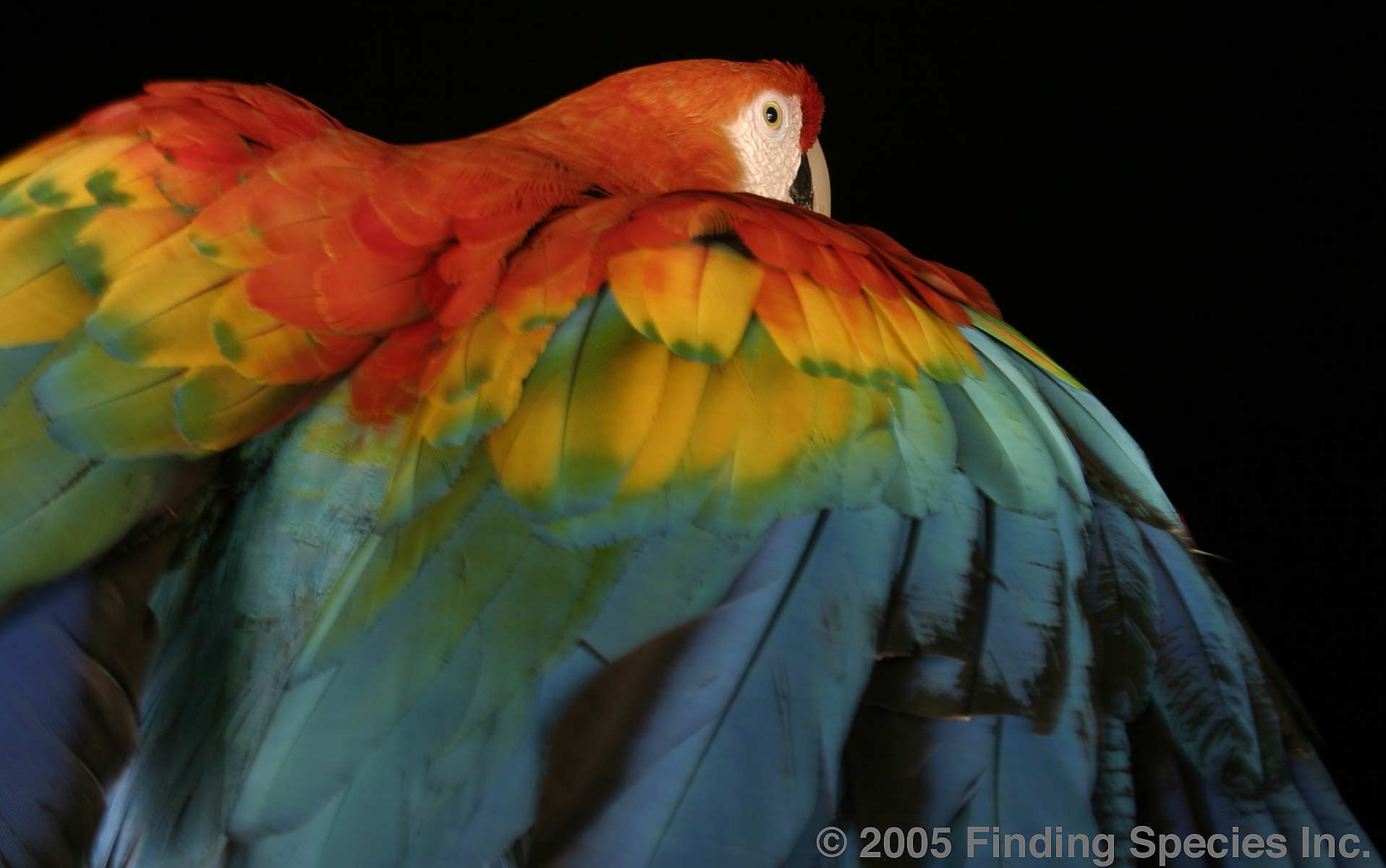Scarlet Macaw (Ara macao) Class: Psittaciformes Order: Aratingidae Family: Aratinginae Genus: Ara Species: macao
IUCN Status: Not Listed
This colorful species is probably one of the best known birds of the Amazonian rainforest. This species has a range extending from the Yucatan Peninsula of Mexico south to the equatorial countries of Ecuador and Peru. Scarlet Macaws are primarily colored red but have strips of yellow, dark blue, light blue, and green on their wings and tail feathers (http://www.thewildones.org/Animals/aramacao.html). Their feet are zygodactylous, meaning that their two outer toes point backward and grip towards the opposite direction of their two forward pointing toes. (http://www.enchantedlearning.com/subjects/birds/printouts/Scarletmacaw.shtml)
Scarlet Macaws inhabit the canopy level (which is a ceiling like structure composed of living tree leaves and is generally between 60 and 130 feet in height) and sometimes the emergent level which is composed of trees between 100 and 240 feet tall (http://www.blueplanetbiomes.org/rainforest.htm). These are the areas of the forest where food is most plentiful. Scarlet Macaws primarily eat fruits, often un-ripe ones that other animals avoid. They also eat nuts, seeds, and surprisingly clay from riverbanks. Why they do this is uncertain, but one theory states that minerals in the clay makes it possible for them to digest poisonous substances contained in the un-ripe fruits that they eat. (http://www.thewildones.org/Animals/aramacao.html)
Scarlet Macaws lay two plain white eggs in a clutch (a set of eggs which are laid at one point in time). The eggs are incubated by both parents. The young stay with their parents for up to two years. These birds can fly at speeds up to 35 miles per hour, and are often seen flying in pairs or small flocks. These birds have been known to live up to eighty years.
Habitat destruction and deforestation are having significant impacts on these birds. Another threat to this species comes from people taking these birds from the forest and selling them as pets. They are admired by pet-owners for their bright colors, and social and talkative nature. (http://www.enchantedlearning.com/subjects/birds/printouts/Scarletmacaw.shtml)
CLICK HERE FOR MORE EXTRAORDINARY
ANIMALS and PLANTS OF YASUNÍ,
THE MOST BIODIVERSE FOREST KNOWN ON EARTH
Yasuní Biodiversity Main Page
|

